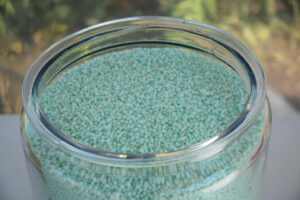What do you want?
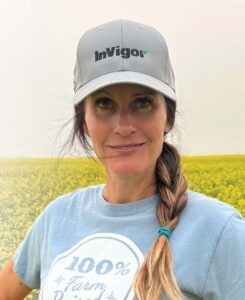 Margaret Rigetti
Margaret Rigetti
Langbank, Saskatchewan
“I was always told there were opportunities on the farm for me, which was maybe an extra important thing for me as a girl to hear.”
— Margaret Rigetti
Margaret Rigetti finds it hard to imagine the future. “Earlier generations couldn’t imagine where we are now. They just kept adapting,” Rigetti says. “The general principles are to embrace innovation and involve family. Any business requires the energy of youth to keep going.”
Rigetti will always remember the day back in 2003 when her uncle came to her and said, “From now on, you can do the marketing.” She had never thought of taking over the marketing. It wasn’t on her radar. “He was getting tired of it, so he gave me the job and mentored me.” Rigetti has been the farm’s marketing lead ever since.
“I was always told there were opportunities on the farm for me, which was maybe an extra important thing for me as a girl to hear,” she says.
Rigetti has three children – two sons and a daughter. “I just had a conversation with my daughter. I told her she would be running the grain cart,” Rigetti says. “She was nervous, but I said ‘you can do it and we need you to do it’.” The two sons are also involved.
“We’ve found success in grain farming. Is that where my children will find success? Maybe.”
A big question Rigetti has for farming in general is whether agriculture will be allowed to innovate. “The Prairies have seen incredible positive changes as a result of technology,” she says, giving glyphosate, herbicide-tolerant canola and zero-till drills as examples. “Will agriculture be able to reach its full potential without too much outside interference, misinformation and disinformation?”
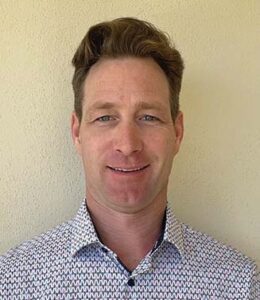 Jeff Frost
Jeff Frost
Olds, Alberta
“I hope fertilizer reduction targets stay voluntary. We have ways to get better, like trying not to broadcast nitrogen in the fall.” — Jeff Frost
The global population is still increasing, and people still need to eat, so Jeff Frost says farmers will need to continue to increase yield – especially as land is lost to degradation and urban sprawl. His concern is mandatory cuts to fertilizer use.
“I hope fertilizer reduction targets stay voluntary,” he says. “We have ways to get better, like trying not to broadcast nitrogen in the fall. We also have variable rate application and 4R practices that can reduce emissions.”
His vision for the farm is to have a stable land base. They rent a “decent amount of land” which could end up being sold or rented to someone else, he says. Buying more land would make the farm more stable, as long as they can cash-flow the cost, he says. That is a risk. “When prices go back to pre-covid levels, like $3 barley or $5 wheat, that could change things quickly if we buy land at high prices and six to seven per cent interest.”
He keeps in mind the saying, “if you’re not growing, you’re shrinking,” but this doesn’t just mean buying more land. The farm could do better on the land it has. “We’re strictly crops, so it would be nice to find another income stream, like manufacturing or a seed cleaning plant,” he says.
Frost has an off-farm job that adds income stability. He started a company in 2016 that provides non-destructive scans of oil and gas pipelines. It checks joints and insulation for wear. He sold the company in 2020 but stayed on as a manager. His vision is to eventually get to full-time farming. “I’m juggling both right now, but farming is number one and one day I will be strictly farming.”
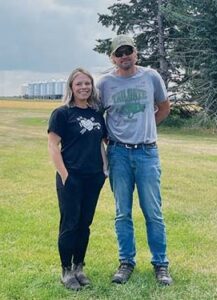 Andrea & Sheldon Guthrie
Andrea & Sheldon Guthrie
Reston, Manitoba
“The training to get certified reassured me that we’re following the right fertilizer practices.”
— Sheldon Guthrie
Andrea and Sheldon Guthrie see the future of agriculture in the land itself. “Land is backbone of any farm, and you get out of it what you put in,” Andrea says. “We want to improve our land’s ability to produce food.”
To do that, they try to be as up to date as possible on best practices. They attend events with different speakers so they can get a range of perspectives. They train to improve their skills. Sheldon recently got his 4R designation, for example.
“The training to get certified reassured me that we’re following the right fertilizer practices,” he says. For example, they apply all fertilizer in the spring. They also soil test regularly, and Sheldon does his own analysis of the raw test results. “I want to make sure we’re using the right product applied at the right rate and right time for each field,” he says.
“After a drought year like this, we’ll be interested to see what’s left in the soil this fall,” Andrea adds.
The Guthries also help the soil with a diverse crop rotation that includes canola, wheat, peas, soybeans and corn.
Part of Andrea’s broader vision would be a public that values what farmers do for the land. “We take care of the land like we would our humans,” she says. “We don’t do anything deliberately to hurt it.”
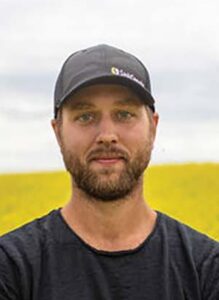 Evan Michel
Evan Michel
St. Gregor, Saskatchewan
“Having never used the technology [variable rate] I am excited about how my practices will change and what I will learn from it.” — Evan Michel
When asked about his vision for the farm and for agriculture in general, Evan Michel’s first thought is technology, specifically for variable rate applications.
“I run Climate FieldView in all of our equipment now,” he says. “The satellite imagery collected throughout the year gives me field maps that match up with combine yield maps pretty closely. FieldView brings all the data into one point, and helps me identify any problem areas with a field.”
He now has a variable-rate capable drill and next year will be his first year applying variable-rate fertilizer. “Having never used the technology, I am excited about how my practices will change and what I will learn from it,” he says, referring to fertilizer rates, yield and overall profitability.
FieldView helps him farm better, he says, by tracking all activities on one app. He does a lot of trials, often splitting a quarter section in half – spraying one half and not the other. With the map, he knows exactly where the line is so can look for visual differences throughout the growing season and check for yield and profit differences using the combine yield map. “You can do all sorts of trials, but if you don’t get quality data at the end, the trial is irrelevant,” he says. “I found FieldView really helpful for that.”
Looking to the future, Michel says a big objective will be to maintain soil health. “We will keep pushing fertilizer rates to get bigger crops and get the most out of the soil,” he says. With pulses, he may need longer breaks between crops to manage diseases like aphanomyces.
Michel expects to keep growing with the times. “I don’t really envision getting smaller any time soon, but we have to figure out if we want to deal with more equipment and more staff in order to take on any major growth.”
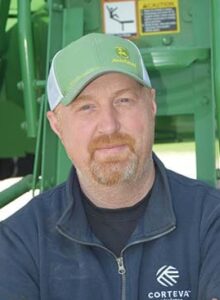 John Bergen
John Bergen
Carman, Manitoba
“I’m not saying I invested in a dryer just to watch softball. Obviously, there are many other benefits. More control over when I harvest – so I can watch softball – is just one.” — John Bergen
John Bergen wants people to “invest in their relationship” with primary producers so they can understand where their food comes from and the farmer’s approach to food production. “Farmers have more in mind that just the bottom line. Soil health and environmental health are important to us,” Bergen says.
His concern is that farm practice will be driven more by what people perceive as right, not what science says is right. People need to know the trade offs. For example, Bergen uses tillage to manage weeds and break down heavy residue. He can reduce some tillage, saving diesel fuel and reducing emissions, but it could mean he has to apply more herbicide to control the weeds. He would like people to understand the challenging trade offs that farmers face.
As for the farm, Bergen has a 16-year-old son who is “very interested” in farming. “I’m really enjoying his youth and excitement,” Bergen says. The son asks a lot of questions, forcing dad to explain why they do this or that.
Expanding to accommodate the next generation may not mean buying more land. “It may mean increased value for the crops we grow, or increasing profit by mitigating weather risks through irrigation, drainage or grain drying,” Bergen says. “Right now, I’m looking at upgrades with an emphasis on quality of life.”
He gives the example of an easy-to-use grain drying system. His daughter was playing softball at provincials in Brandon and Bergen had oats that were close to ready. So he combined the oats at 18 per cent moisture and put them through the dryer. The alternative was to let them air dry, wait for good harvest days and probably miss his daughter’s softball games. “I’m not saying I invested in a dryer just to watch softball,” Bergen says. “Obviously, there are many other benefits. More control over when I harvest – so I can watch softball – is just one.”
This also sends a positive message to the next generation.
 Cheryl Westman
Cheryl Westman
Vermilion, Alberta
“Farmers are great at adapting to new ideas. We also need to educate the public to show how these new technologies can help.” — Cheryl Westman
Technology is going to keep us moving forward, Cheryl Westman says. “We don’t have a choice when it comes to what consumers want, so we may need to be ready to adopt other solutions for insect and weed control, and for fertilizer.”
She gave the example of new technology that zaps weeds with a jolt of electricity, and fertilizer advancements, such as enhanced efficiency products and placement methods, that get nutrients into the plant without leaching into water ways or loss to the atmosphere.
“Farmers are great at adapting to new ideas,” Westman says. “We also need to educate the public to show how these new technologies can help.”
On her own farm, part of her job is to prepare her three children to be flexible and ready to adapt, and how to move forward with technology. “We have two girls who love cows and a son more interested in crops and equipment,” Westman says. “I’m interested to see where they want to take those interests.”
